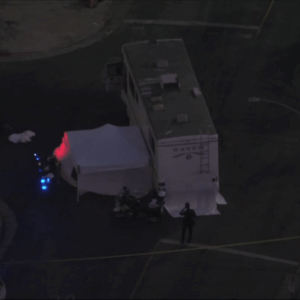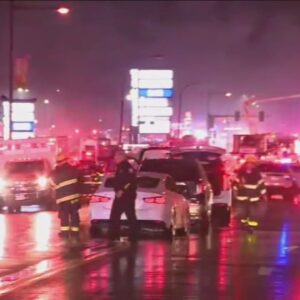India’s aviation regulator has ordered the country’s airlines to examine fuel switches on Boeing aircraft, after a preliminary report on the Air India flight 171 crash in June showed the fuel supply had been cut seconds after takeoff.
The Directorate General of Civil Aviation said it had issued the order after several domestic and international airlines began making their own inspections of the locking mechanisms attached to the switches.
South Korea was also preparing to order all airlines in the country that operate Boeing jets to examine the switches.
A preliminary report, released on Saturday, found both engines of the Boeing 787 Dreamliner, which crashed, killing 260 people, had been starved of fuel, leading investigators to focus on the fuel switches in the cockpit.
There has been online speculation about two competing theories – one of pilot error or sabotage, and one of faulty fuel switch locks – although Air India has cautioned that the investigation is in its early stages and there have been no recommended actions against Boeing.
Air India’s chief executive, Campbell Wilson, said in a memo to staff on Monday that the report had “triggered a new round of speculation in the media” after providing “both greater clarity and opened additional questions”.
Wilson added: “The preliminary report identified no cause nor made any recommendations, so I urge everyone to avoid drawing premature conclusions as the investigation is far from over.”
The report, by India’s Aircraft Accident Investigation Bureau (AAIB), cited a voice recording from the flight deck in which it said one of the pilots was heard asking the other “why did he cutoff?” The other pilot responded that he “did not do so”, according to the report.
Both switches were moved back to allow fuel to flow, but the plane was too low and slow to recover.
While the report is not intended to provide definitive answers but only lay out basic facts, it has led to theories suggesting one of the pilots had either turned off the fuel to both engines, either by mistake or to deliberately bring down the plane.
The Indian Commercial Pilots’ Association (ICPA) said it was “deeply disturbed by speculative narratives … particularly the reckless and unfounded insinuation of pilot suicide”.
“There is absolutely no basis for such a claim at this stage,” it said in a statement on Sunday, adding: “It is deeply insensitive to the individuals and families involved.”
A separate theory is that the fuel switches, which are located just below the thrust levers, could have switched off by themselves. This is usually not possible as they operate independently and need to be lifted up to disengage a lock.
Adding to concern around fuel switches, the preliminary accident report had cited a bulletin issued by the US Federal Aviation Administration (FAA) in 2018 that had recommended the locking mechanisms be checked on multiple variants of Boeing aircraft, including the 787, after the company had received reports that on some 737 models “fuel control switches were installed with the locking feature disengaged”.
However, the advisory only made recommendations and did not consider it to be “an unsafe condition” that needed a mandated inspection. It was also issued in 2018 and related to so many different types of Boeing jets that it would probably have already been flagged if the locks were not working on operating fleets.
Steve Giordano, a former airline captain who flies several Boeing planes including the 787, said he did not believe the issues were “mechanical” or “airplane related”.
“I’m not convinced it was suicide or intentional,” he wrote on X. “I’m just convinced that the switches were moved by a human hand.”





